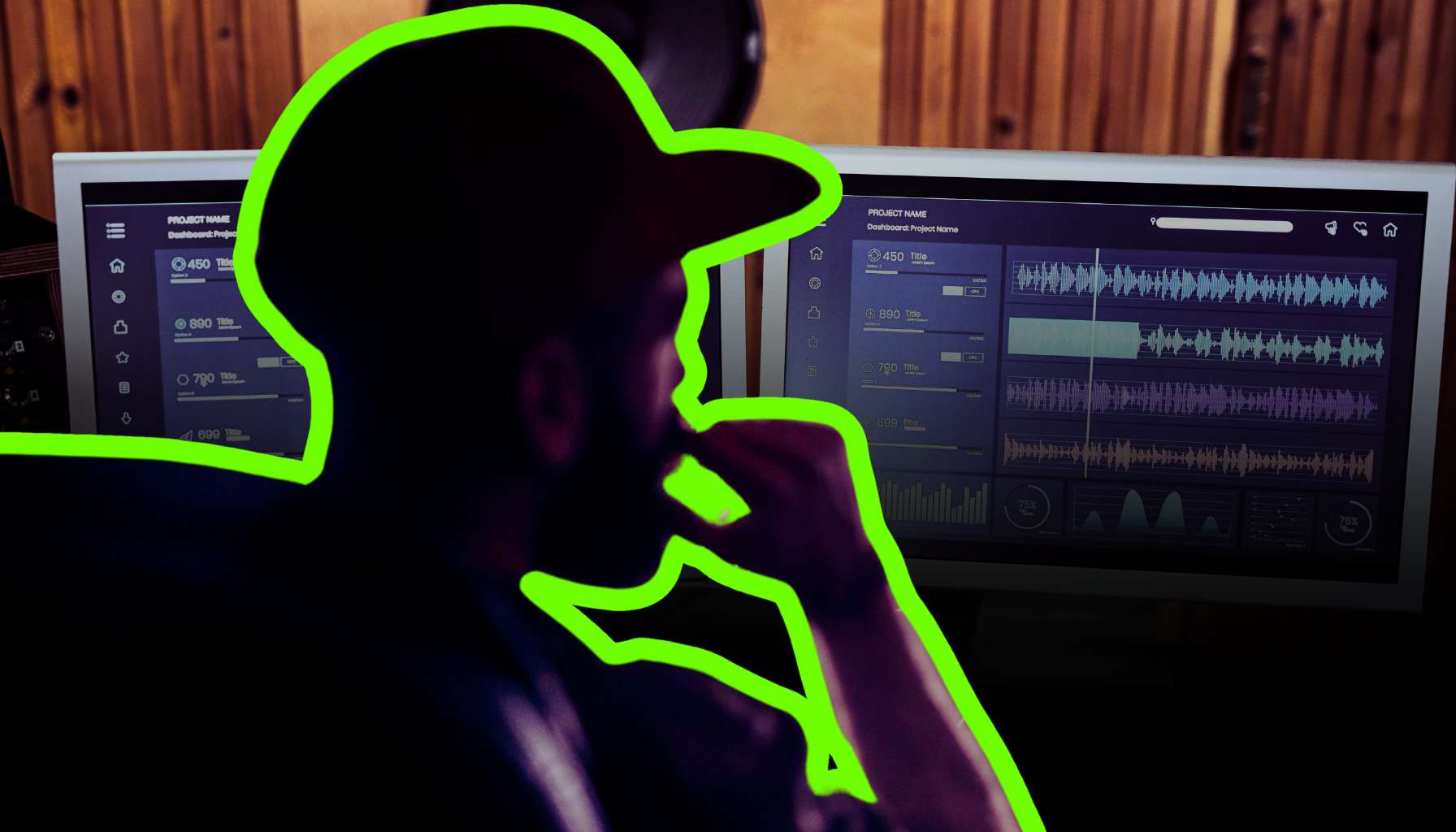I. Introduction: The Convergence of Global Music Trends and Local Markets
As the digital age spins at a dizzying pace, music has become the universal language that bridges continents and cultures. It’s a symphony where global trends and local scenes play a duet, each influencing the other in a rhythmic dance. But how did we get here? Let’s dive into the beat of this phenomenon and explore how the sounds of the world converge in our own backyards.
A. Unpacking the Phenomenon of Globalization in Music
Globalization isn’t just a buzzword; it’s the maestro conducting the orchestra of worldwide music trends. It’s why a teenager in Tokyo can vibe to the same tracks as someone in Tennessee. The internet has become the turntable that spins records from every corner of the globe, making music more accessible than ever.
But it’s not just about access; it’s about influence. As artists from different cultures collaborate, they weave a tapestry of sound that resonates across borders.
B. Historical Context: The Journey from Past to Present in Music Trends
To appreciate today’s music landscape, we’ve got to rewind the tape and look at the tracks laid by history. From the British Invasion to the birth of hip hop, music has always been on the move, hitchhiking across continents and picking up local flavors along the way.
These historical crossovers set the stage for the genre-melding melodies we jam to today. Now, as we queue up the next track on this playlist, we’re ready to hit play on Identifying Global Music Trends. We’ll see how the rise of streaming services has given everyone a front-row seat to the world stage.
We’ll witness genre boundaries blur into obscurity and spot new subgenres popping up like notifications. And we’ll watch as social media turns up the volume on music virality, making overnight sensations out of bedroom producers. This is more than just a story about music; it’s about how music tells the story of our interconnected world.
So, whether you’re an artist trying to make your mark or a marketer tuning into the next big hit, it’s time to listen closely. Because in this global concert, every local market has a chance to step up to the mic and sing its heart out. Let’s explore the sound of music’s future together, one beat at a time.
II. Identifying Global Music Trends
The music industry is a restless beast, constantly shifting under the weight of new trends, technologies, and tastes. In the wake of our exploration into the symbiosis of global influences and local flavors, we now tune into the current waves making ripples across the world’s soundscapes. So, what’s topping the charts of musical evolution today?
A. The Rise of Streaming Services and Music Accessibility
It’s the digital age, and streaming services are the new record shops. They’ve not just changed how we access music; they’ve revolutionized the very fabric of the industry.
With a few clicks or taps, we’re swimming in a sea of tunes from every genre imaginable. It’s the era of the Digital Revolution in Music Consumption, and platforms like Spotify and Apple Music aren’t just playing music; they’re playing god, deciding who gets heard and who fades into the static.
These digital deities wield The Power of Playlists and Algorithmic Recommendations, crafting our musical journeys with a mix of artificial intelligence and human curation. Their influence is undeniable, but it’s not just about who’s got the biggest library. It’s about who gets on the coveted playlists, who gets recommended by the algorithms, and ultimately, who gets played.
B. Genre Crossover and Fusion
Gone are the days when genres were neat little boxes where musicians neatly filed their tunes. Today, genre lines are as blurry as a bassist’s fingers at a metal concert. Pop hooks cozy up with hip-hop beats, country twangs dance with EDM synths, and new subgenres are born faster than a drum solo in a punk song.
This Genre Crossover and Fusion are not just musical experiments; they’re the signposts of an industry where hybrid is the new normal. Among these Notable Fusion Genre Success Stories, we find artists who are not just crossing genres but cultures, creating a global melting pot of sound.
It’s a world where K-pop collides with Latin pop, where Afrobeat meets trap music, and where every collaboration is a chance to create something the world has never heard before.
C. The Virality of Music via Social Media
Let’s not forget the 800-pound gorilla with a smartphone: social media. Platforms like TikTok have turned into launchpads for music careers, where a 15-second clip can explode into a global phenomenon overnight.
Influencers and User-Generated Content are the new A&R reps, scouting for the next big hit in the vast ocean of memes, challenges, and viral dances. Short-Form Video Platforms have become the new stages where artists perform for a global audience, and Internet Culture dictates what moves us, quite literally, as dance challenges and catchy hooks dominate the feeds.
In this landscape, virality is the currency, and it’s as volatile as the stock market. As we segue into The Influence of Global Trends on Local Music Markets, we prepare to delve deeper into how these global currents are shaping the shores of local scenes. We’ll look at how local artists can ride the wave of global platforms to international fame, and the challenges they face in staying true to their roots.
We’ll explore the shifts in production and marketing strategies that are necessary to stay afloat in this tidal wave of global music trends. So, whether you’re an indie artist looking to go viral or a music marketer trying to catch the next big wave, stay tuned. The music industry is a vast ocean, and understanding these global trends is your compass to navigate its ever-changing waters.
III. The Influence of Global Trends on Local Music Markets
In a world where a song can travel faster than a jet plane, local music markets are finding themselves under the bright lights of the global stage. But with this newfound visibility comes a symphony of questions: How do local artists harness the power of global trends without losing their unique sound? And what’s the real cost of playing to a worldwide audience?
Let’s drop the needle on this conversation and see how the global beats are resonating in our own neighborhoods.
A. Local Artist Exposure on Global Platforms
Imagine a musician in a small town hitting the right chord on a global platform and, just like that, their sound waves ripple across continents. This isn’t a fairy tale; it’s the new reality for local artists in the age of digital music distribution. We’ve seen Breakthrough Examples of Local Artists Going Global, making it clear that you don’t need to be signed to a major label to make a major impact.
Yet, for every viral success story, there are countless others facing the Challenges and Opportunities for Emerging Artists. The digital landscape is a jungle, and it takes more than talent to navigate it. Artists must become their own marketers, understanding SEO and social media algorithms, all while crafting sounds that stand out from the digital noise.
B. Shifts in Local Production and Marketing Strategies
As global trends percolate into local scenes, artists and producers are rethinking their game plans. Adapting to Global Trends While Maintaining Local Identity is a delicate dance. It’s about finding that sweet spot where international appeal meets authentic sound.
This is where Bilingual Tracks and International Collaborations come into play, opening doors to new markets and cultural exchanges that enrich the music itself. This shift isn’t just about the music; it’s about the message it carries. It’s a dialogue between the global and the local, where artists convey their stories to a wider audience without losing their homegrown essence.
C. Economic Impacts on Local Music Industries
Let’s talk money because, at the end of the day, the music industry’s got bills to pay. The global market is a double-edged sword for local industries. On one side, there’s an influx of Revenue Streams from streaming royalties, live performances, and merchandising.
On the other, the Changing Business Models pose a real head-scratcher for traditional industry players. The Import/Export of Music and Rights Management becomes a whole new ballgame when your audience is no longer defined by geographical boundaries. It’s a game that requires understanding international copyright laws, navigating different cultural expectations, and ensuring that artists get their fair share of the pie.
As we riff into Cultural Exchanges and Local Market Adaptation, we’ll explore the harmonies and dissonances that occur when global meets local in the music industry. We’ll see how Cross-Pollination of Musical Styles and Practices can lead to innovation, but also how it raises questions of Collaboration vs. Cultural Appropriation.
It’s a complex melody that requires a keen ear and a sensitive touch. So, whether you’re strumming a guitar in a garage or spinning tracks in a studio, remember that the world is listening. The influence of global trends on local markets isn’t just changing the music we create; it’s changing the way we think about music, community, and identity. Tune in, because this conversation is about to get amped up.
IV. Cultural Exchanges and Local Market Adaptation
As we’ve seen, the global music trends are akin to a high-speed train, zooming past traditional boundaries and inspiring local markets to hop aboard. But this train doesn’t just carry tunes; it’s packed with cultural exchanges that are reshaping the music industry’s landscape. So, how do local scenes adapt and thrive amidst this global shake-up?
A. Cross-Pollination of Musical Styles and Practices
The global stage is not just a showcase but a melting pot where different musical styles and practices fuse to create something fresh. This Cross-Pollination of Musical Styles isn’t a new concept, but the scale at which it’s happening today is unprecedented.
Artists worldwide are Learning and Integrating New Musical Techniques, often blending traditional instruments with modern beats, or infusing classic styles with contemporary flair. However, with great fusion comes great responsibility.
The line between Collaboration and Cultural Appropriation can often be as thin as a high E string on a well-worn guitar. Musicians must navigate these waters with care, ensuring that their work pays homage to its origins rather than exploiting them for catchy hooks.
B. Sustaining and Revitalizing Local Music Heritage
In the face of global influences, local music markets are finding creative ways to keep their heritage alive. Balancing Global Influence with Tradition is the new mantra, where artists strive to maintain their cultural roots while appealing to a broader audience. Initiatives and Movements in Preservation are springing up, with musicians and communities coming together to celebrate and sustain their unique musical identities.
These efforts aren’t just about nostalgia; they’re about carving a space in the future for the music of the past. It’s about ensuring that the rich tapestry of local sounds isn’t lost in the shuffle of the next viral dance craze.
As we gear up for Local Listener Preferences and Global Music Trends, we’ll turn the spotlight on the people with the earbuds in—the listeners. Understanding the Local Demographics is key to knowing what makes them tap their feet or hit the skip button.
We’ll also delve into how artists and marketers can Adapt to Shifting Listener Demands, especially as the influence of Gen Z grows stronger and the taste for Nostalgia and Revivals reshapes the market dynamics.
Music is a conversation that spans generations and geographies. It’s a language that’s constantly evolving, with every local scene contributing its dialect. So, as we navigate this global/local soundscape, let’s remember that music is more than a commodity; it’s the heartbeat of culture, and every beat tells a story. Stay tuned, because this narrative is far from over, and the next chapter promises to be a banger.
V. Local Listener Preferences and Global Music Trends
Now, let’s shift gears and groove to the beat of the listener’s drum. After all, without those tapping toes and streaming stats, where would the music industry be? It’s the people with their playlists and predilections that drive the trends, shaping the sounds that serenade our world. But as the global beats knock on their doors, how are local listeners responding, and what does this mean for artists and marketers?
A. Understanding the Local Demographics
You’ve got to know your audience like you know your favorite album’s tracklist. Who are they? What’s their jam? Understanding the Local Demographics is crucial for artists trying to make it big or small.
It’s a colorful mosaic of ages, cultures, and preferences that can either make or break a music career. Local markets have their own rhythm, influenced by regional traditions, languages, and social contexts.
For instance, while one region might sway to the strumming of acoustic guitars, another might get down to the gritty grime beats. Recognizing these nuances allows artists to tailor their music to resonate with their immediate audience, while also finding that universal chord that appeals to listeners worldwide.
B. Adapting to Shifting Listener Demands
Music tastes are as fickle as a fiddle in a thunderstorm. One minute you’re in, the next you’re as outdated as an 8-track in a Tesla. The Gen Z Preferences and Influence are particularly potent, dictating trends faster than you can say “TikTok”. They’re the streaming generation, growing up with the world’s music library at their fingertips, and their tastes are as diverse as their social media feeds.
Then there’s the Nostalgia factor. It’s not just a yearning for the “good old days”; it’s a powerful force in music. Revivals and sample-heavy tracks are Impacting Market Dynamics, as listeners seek comfort in the familiar while exploring the new. It’s this blend of old and new that artists and producers must master to keep the hits coming and the streams flowing.
VI. Legal and Ethical Considerations
As we riff off the vinyl of local listener preferences, let’s not gloss over the legal chords and ethical notes that form the fine print of the music industry’s sheet music. These aren’t just the footnotes of a record sleeve; they’re the ground rules that ensure the party doesn’t end in a courtroom drama.
A. Copyright Laws and Global Music Streaming
Cue the serious music: Copyright Laws and Global Music Streaming are currently engaged in a complicated dance-off. Artists, small and big, are finding their work accessible across borders, which is great for fame but can be a jam session of headaches when it comes to getting paid. The Fair Use doctrine is like that one elusive note that’s hard to hit—it’s subjective and varies widely from country to country.
And then there’s the ongoing backstage debate about Compensation Discussions, where the royalties from streaming services often seem like pocket change thrown at a street performer. The Push for Better Artist Royalties Worldwide is the industry’s rallying cry, demanding that those who create the music we love get their fair share of the streaming gold rush.
B. The Ethics of Sampling and Musical Borrowing
Sampling is the DJ’s paintbrush, but when does borrowing beats turn into musical theft? The Fine Line between Inspiration and Infringement is a topic that gets music lawyers as excited as a fan at a comeback tour. With artists from every corner of the globe dipping into each other’s sound banks, the question of ownership gets murkier than the bass line of a lo-fi track.
.
Ethics in music isn’t just about the samples; it’s about ensuring that the original artists, often from marginalized communities, are recognized and compensated. It’s about cultural respect, about not turning someone else’s cultural heritage into a Halloween costume.
VII. The Future Trajectory of Global Music Trends
Imagine a world where your next favorite song might be brewed in a digital cauldron, with algorithms for spices and artificial intelligence for a chef. Welcome to the future trajectory of global music trends, where technology isn’t just changing the game; it’s rewriting the rulebook. But what does this spell for the local markets dancing to the tune of global beats?
A. Predicting Up-and-coming Movements
In the crystal ball of the music biz, data analytics and market research are the new fortune tellers. They don’t read palms; they read streaming patterns, social media buzz, and download stats to predict which tunes will take the world by storm. Artists and labels are turning to this treasure trove of information to forecast Potential Breakthrough Genres and Styles before they hit the mainstream.
But it’s not all numbers and graphs. The human element remains as the maestro of the mix, interpreting these data symphonies to create music that resonates on a personal level. By Utilizing Data Analytics and Market Research, the industry is tuning into the listener’s unspoken desires, often before they even press play.
B. The Role of Technology in Shaping Music
If music is an ocean, then technology is the moon, pulling the tides in new directions with its gravitational pull. Advanced Production Tools and AI are the new instruments in an artist’s repertoire, enabling sounds that were once the stuff of science fiction.
Artificial intelligence is already composing tracks that can tug at heartstrings or fill dance floors, blurring the lines between human creativity and machine learning. Immersive Music Experiences and VR are transporting fans from their bedrooms to virtual concerts, where the sense of presence is so strong, you can almost feel the sweat from the stage.
These aren’t just gimmicks; they’re the opening acts to a revolution that’s redefining what it means to experience music.
VIII. Case Studies: Local Markets Influencing Global Music Trends
The global music stage is a carousel of trends spinning round and round, and sometimes, the most unexpected players can push the carousel into a whole new revolution. Enter the case studies of K-Pop and Afrobeat – two local markets that have stamped their passports firmly in the halls of global influence.
A. K-Pop: A Marketing and Production Phenomenon
Let’s start with K-Pop, a genre that’s as much a cultural export as it is a music scene. This Korean wave, or “Hallyu”, has surged across the globe, with Idols, Training, and Perfection in Performance becoming the new benchmarks for pop music.
The K-Pop industry isn’t just producing earworms; it’s churning out multi-talented, all-singing, all-dancing, all-charming idols who are as much about visuals and personalities as they are about the tunes.
But it’s not just the music—it’s the machine behind it. K-Pop is a masterclass in Marketing and Production, with agencies like SM Entertainment and YG Entertainment architecting a star system that rivals Hollywood’s golden era.
They’re not just creating artists; they’re crafting brands, complete with Social Media and Fandom Dynamics that turn fans into armies of loyal followers.
B. Afrobeat’s Emergence on the World Stage
Now, let’s groove to the rhythm of Afrobeat, a genre that’s sending shockwaves from Lagos to Los Angeles. Afrobeat’s Rhythmic Influence and Dance Culture have transformed it from a West African treasure to a global party playlist staple. It’s the sound of a generation that’s both deeply rooted in tradition and boldly modern, mixing Yoruba beats with jazz, funk, and a swagger that’s irresistible.
And talk about Collaborations and Recognition – when artists like Wizkid and Burna Boy hit the studio with international megastars, you know the world is listening. Afrobeat has gone from the local clubs to the Grammys, proving that when it comes to music, borders are just lines on a map.
IX. Conclusion: Navigating the Intersection of Global and Local Dynamics
As we’ve tuned into the symphony of the global music scene, it’s clear that the harmony between global trends and local flavors is more intricate than a polyrhythmic beat. It’s a dance of influences, a give-and-take that keeps the music industry vibrant and ever-evolving. So, as we hit the final bar of this melody, let’s explore the importance of balance for artists and marketers and how cultural diversity and exchange can enrich the music industry.
The interplay between the universal and the unique is a tightrope walk for artists and marketers alike. On one side, there’s the allure of global appeal, the siren song of international charts and playlists. Yet, on the other, lies the soul of music—its cultural identity, the local heartbeat that gives it life. Artists are finding that to resonate globally, they don’t have to shed their cultural skin; they just need to invite the world to their local dance floor.
Marketers, those maestros of buzz and hype, are learning that the key to global success isn’t just in the number of streams but in the story they weave. It’s a narrative that celebrates diversity, that showcases the unique stories behind the music, whether it’s the history-soaked blues of the Mississippi Delta or the infectious bops of Seoul’s pop scene.
It’s about marketing that doesn’t just sell a track but shares a culture. Encouraging Cultural Diversity and Exchange in the Music Industry is not just an ethical mantra; it’s sound business. The industry thrives when there’s a kaleidoscope of sounds and stories, when listeners can teleport from the fjords of Norway to the clubs of Havana with just a click.
This diversity isn’t just good for the ears; it’s good for the soul of the industry, ensuring that music remains a universal language that speaks in a thousand dialects.













